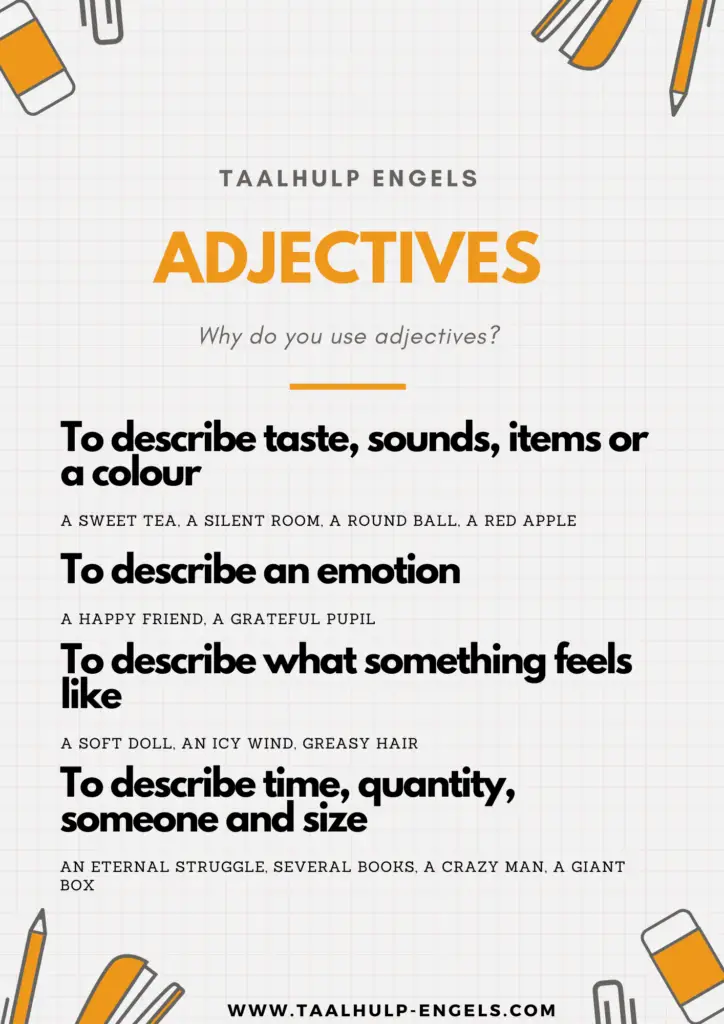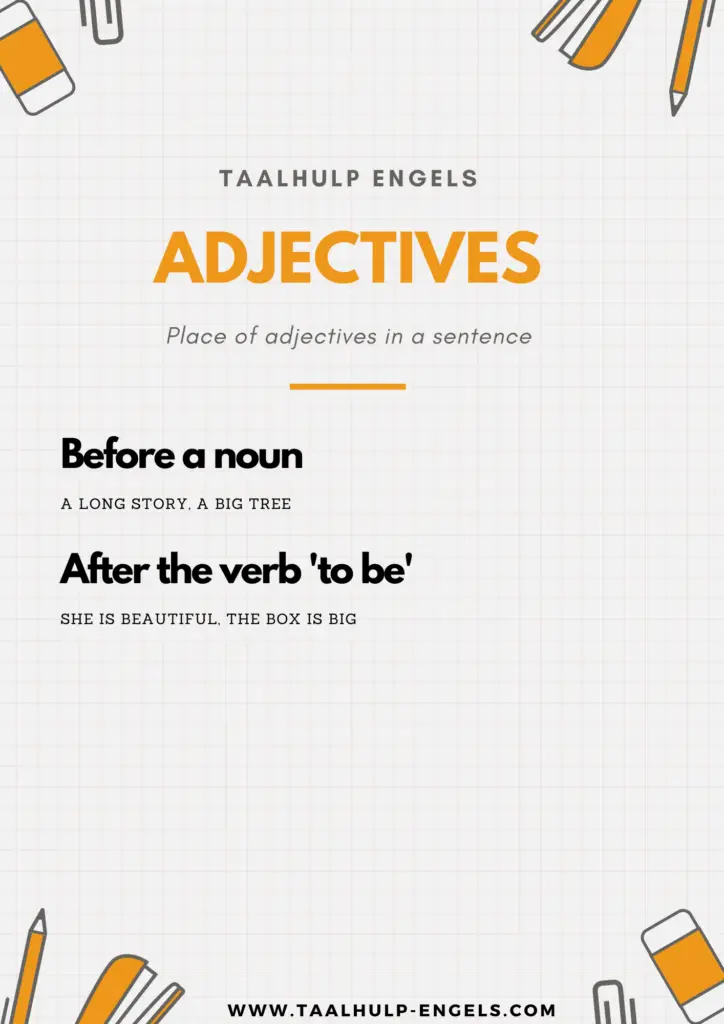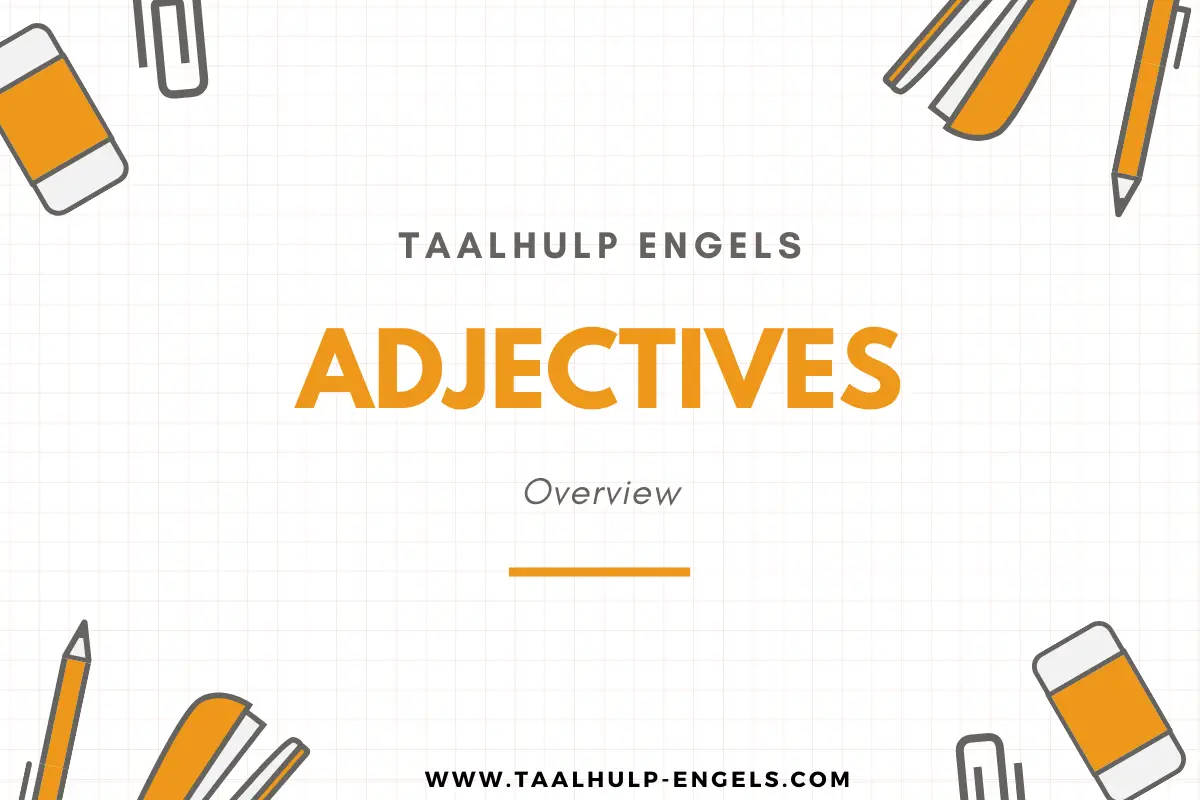Adjectives are really important when you want to tell a story because they make a story more interesting and more detailed. On this page, you have an overview of what adjectives are, where you place them in a sentence and there are also some examples.
What are adjectives?
Adjectives are words that accompany nouns. They give more information about the noun in a sentence; so it gives more information about people or things.

Why do we use adjectives?
Adjectives make a language more interesting because you get more information about someone or something. Each adjective you use gives more information about a noun in the sentence.
You can describe someone or something in many different ways and you have an overview of the different possibilities below.

Describing taste
| a delicious waffle |
| a bitter piece of candy |
| a sweet tea |
| a spicy steak |
| a sour apple |
Describing sounds
| a loud bang |
| a noisy crowd |
| a silent room |
| a whispering man |
| a muffled sound |
Describing items
| a round ball |
| a big box |
| a straight branch |
| an oval window |
| a hollow pumpkin |
Describing colour
| a green bush |
| a red apple |
| a blue ball |
| a dark sweater |
| an orange pen |
Describing emotions
| an angry man |
| a happy friend |
| a faithful woman |
| a grateful pupil |
| a jealous friend |
Describing what something feels like
| a soft doll |
| a moist wall |
| an icy wind |
| a dusty floor |
| greasy hair |
Describing time
| an eternal struggle |
| a quick walk |
| an annual meeting |
| a future wife |
| a long conversation |
Describing quantity
| countless hours |
| several books |
| enough food |
| hundreds of people |
| a measly harvest |
Describing someone
| a smart boy |
| a crazy man |
| an evil professor |
| an ambitious boss |
| a calm teacher |
Describing size
| a giant box |
| a short ruler |
| a thin book |
| a fat dog |
| a tall woman |
Place of adjectives in a sentence
After seeing all these examples, it should be clear already where you put adjectives in a sentence. You also have an overview below:
Before the noun
The most common place of adjectives is before the noun.
| a long story |
| a big tree |
| an interesting article |
After the verb ‘to be’
In some cases, you can also put the adjective after the verb. This is usually the case for the verb ‘to be’. Adjectives can also be placed after linking verbs such as ‘to get’, ‘to feel’, ‘to become’, ‘to seem’, ‘to taste’, and ‘to appear’. These linking verbs are used to describe a particular state someone is in or a sensorial experience.
| she is beautiful |
| the box is big |
| he becomes famous |

Word order adjectives
It’s possible to use more than one adjective to talk about the same noun in one sentence. If this is the case, there is a word order that you need to respect. Keep in mind that using more than three adjectives for the same noun is not that common.
You have a brief overview of the word order for adjectives below:
- Quantity
- Opinion
- Size
- Age
- Form
- Colour
- Origin
- Material
- Purpose, goal
Plural form of adjectives
An adjective never changes, even when you are dealing with a noun in the plural form. You don’t change the adjective when this is the case.
| thin books |
| round balls |
| yellow flowers |
| evil people |
| bad apples |


Exercises
- Adjective or Adverb Exercise 1
- Adjective or Adverb Exercise 2
- Adjective or Adverb Exercise 3
- Adjective or Adverb Exercise 4
- Adjective or Adverb Exercise 5


